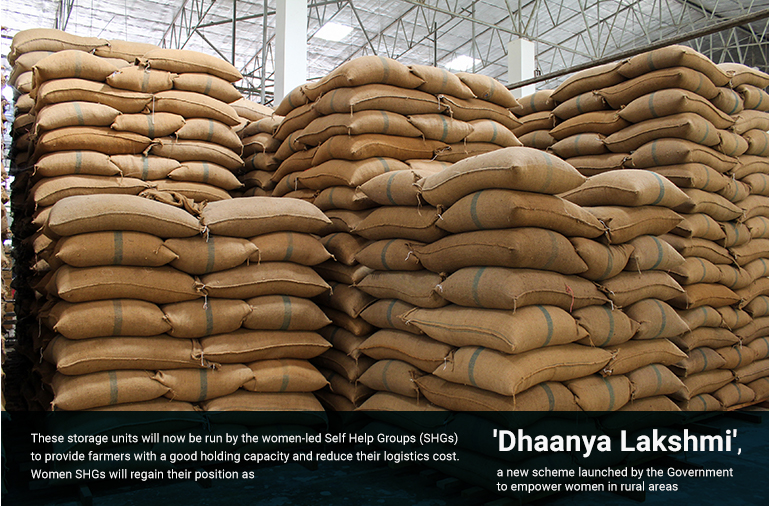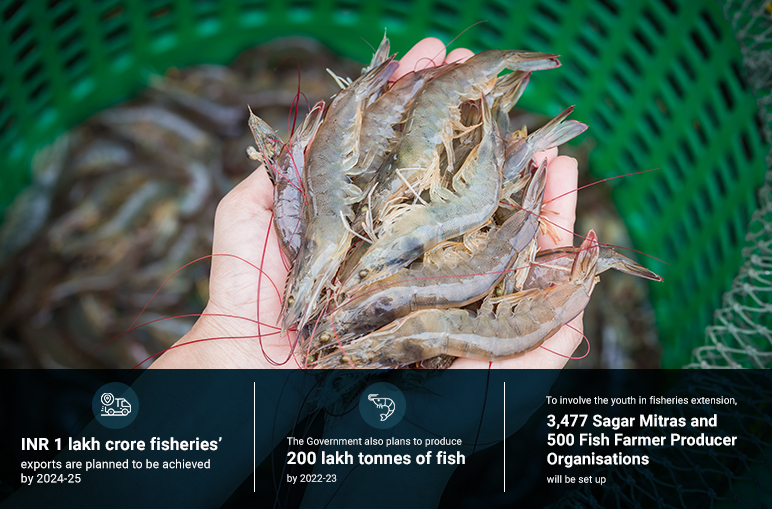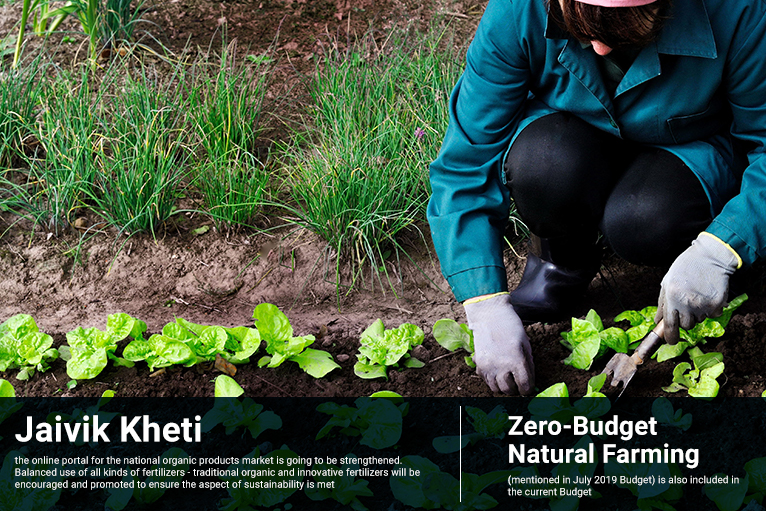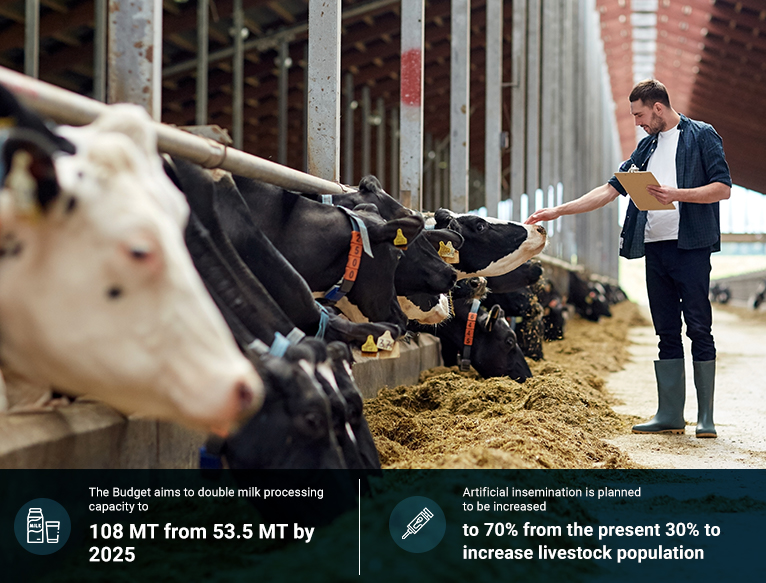The beginning of a new decade always promises hope for a better tomorrow. Looking back at the last decade, the new decade puts a lot into perspective in terms of overall development. A nation’s progress is dependent on its pillars of growth and economy.
Agriculture is one of the most important sectors that impacts the Indian economy. The Indian agriculture sector accounts for 16% of India’s gross domestic product or GDP (2017-18) and employs 50% of the country’s workforce as per the Business and Economics Journal. Most Indians are dependent upon agriculture directly or indirectly, as a source of food or business. The Government’s investment plans in agriculture have a major impact on the economy of the nation.
About the 2020 Budget on Agriculture
When it comes to the agricultural front, the Government has shown augmented focus on improving the Indian agricultural scene. The Union Budget is all set to bring forth several initiatives to induce positive changes in the nation’s agricultural sector.
The Budget is a meticulously planned set of proposals coined by the Government that defines the set path ahead into the country’s future. The latest Union Budget has given rise to an interesting approach toward shaping a better future for Indian agriculture. The agricultural sector is one of the key pillars of the Indian economy. Now being tested with a severe downturn in terms of growth, the Indian economy has been termed fragile by many financial experts worldwide. Keeping the Central Government’s goal of doubling farmers’ income by 2022 in mind, the Union Budget has aimed to introduce numerous initiatives to bring positive change into Indian agriculture.
What does the Agriculture Budget 2020 include?
The Budget proposes a sixteen-point plan for agricultural development. Some of the essential pointers included in the Agriculture Budget 2020 are Krishi Udaan, Village Storage Scheme, Blue Economy, One-Product One-District, and Jaivik Kheti, to name a few.
Here are the key highlights to focus on from the Budget concerning the country’s Ag sector:
Fund Allocation
INR 2.83 lakh crore to be allocated for the Sixteen Action Points
The Budget brings in a 30% increase in overall fund allocations toward agriculture. The Government has proposed to allocate INR 2.83 lakh crores for the sixteen-point plan, INR 1.6 lakh crores dedicated exclusively toward Agriculture, Irrigation, and Allied activities. The Budget also introduced expansion plans for the NABARD Refinance Scheme.
The increased budget from the previous proposal will bring in the much-needed credit level improvement for the farmers at the ground level. This means the beneficiaries under the KCC scheme and PM-KISAN scheme will be covered under the budget. NABARD will now map and geo-tag agri-warehouses, cold storages, reefer van facilities, etc. This will further strengthen the storage and warehousing sector and contribute to preventing food loss and will have a positive impact on the cold storage supply chain.
Warehousing in line with Warehouse Development and Regulatory Authority (WDRA) will have new norms now. Some of them are:
-
Viability Gap Funding for setting up efficient warehouses at the block/taluk level. This will give farmers a better value for their crops.
-
Food Corporation of India (FCI) and Central Warehousing Corporation (CWC) to undertake such warehouse building
Financing on Negotiable Warehousing Receipts (e-NWR) will be integrated with e-NAM to simplify the process.
Discussed below are some of the key budget highlights 2020 for farmers.
Village Storage Scheme:
The Government recognizes the need for a better storage system in rural areas to make sure crop loss due to the lack of storage facilities is avoided. These storage units will now be run by the women-led Self Help Groups (SHGs) to provide farmers with a good holding capacity and reduce their logistics costs. Women SHGs will regain their position as ‘Dhaanya Lakshmi’, a new scheme launched by the Government to empower women in rural areas.

Keeping in mind the pressing need for irrigation solutions in dry areas and water-deficit lands, comprehensive measures for 100-water-stressed districts have been proposed based on the geographical challenges pertaining to the availability of water in the region.
Blue Economy:
One of the key Budget highlights 2020 for farmers, ‘Blue Economy’ is an initiative to promote smart, sustainable, and inclusive growth and employment opportunities within the Indian Ocean’s aquaculture and marine economy.
The blue economy, which consists of economic activities dependent on marine resources, comprises 4.1% of the Indian economy. The Government of India has proposed various initiatives for the aquaculture and fisheries sector in this Budget to develop these sectors.
INR 1 lakh crore fisheries exports are planned to be achieved by 2024-25. The Government also plans to produce 200 lakh tons of fish by 2022-23. To involve the youth in fisheries extension, 3,477 Sagar Mitras and 500 Fish Farmer Producer Organizations. Growing algae, seaweed, and cage culture are planned to be introduced and promoted as part of this initiative. An overall framework for the development, management, and conservation of marine fishery resources will be accomplished as a result.

Agri-Transport Sector:
Kisan Rail has been proposed by the Government in the budget and will be set up by Indian Railways through Public-Private Partnership. To build a seamless national cold supply chain for perishables (milk, meat, fish, etc), Express and Freight trains will have refrigerated coaches. Not just land but the budget brings in aviation into picture by launching new initiatives like Krishi Udaan, proposed to be launched by the Ministry of Civil Aviation. Both international and national routes will be covered.

Horticulture:
The Agriculture Budget 2020 has introduced One-Product One-District for better marketing and export. Here are some more insights on the horticulture plans from the Budget.
Organic, Natural, and Integrated Farming:
The Budget aims at encouraging organic farming and integrated farming by bringing in well-planned measures. Digitizing the process is a part of the plan amongst others so that the process is more efficient than before.
- ‘Jaivik Kheti’, the online portal for the national organic products market is going to be strengthened. Balanced use of all kinds of fertilizers – traditional organic and innovative fertilizers will be encouraged and promoted to ensure the aspect of sustainability is met.
- Zero-Budget Natural Farming (mentioned in July 2019 Budget) is also included in the current Budget.

The Agriculture Budget 2020 has plans of expanding Integrated Farming Systems in rain-fed areas of the country. To cater to the non-cropping season, Multi-tier cropping, bee-keeping, solar pumps, and solar energy production has been planned to be added. Supporting this cause is the PM-KUSUM scheme, where 20 lakh farmers are going to be provided assistance to set up stand-alone solar pumps. Another 15 lakh farmers will be helped to solarise their grid-connected pump sets. The Budget also aims to enable farmers to set up solar power generation capacity on their fallow/barren lands and to sell it to the grid through a dedicated scheme.
For Livestock:
Focusing on the development of livestock in the Budget, The Government has various upgrade plans set in place.
The Agriculture Budget 2020 aims to double milk processing capacity to 108 MT from 53.5 MT by 2025. Artificial insemination is planned to be increased to 70% from the present 30% to increase the livestock population. To develop fodder farms, Mahatma Gandhi National Rural Employment Guarantee Act (MGNREGA) will be dovetailed as part of the plan. The Budget also aims at eliminating Foot and Mouth Disease, Brucellosis in cattle, and Peste Des Petits Ruminants (PPR) in sheep and goats by 2025.

The Conclusion:
The Union Budget 2020 proposes to bring fundamental and definitive changes to Indian agriculture and its allied sectors. The increase in fund allocation demonstrates the intent to transform the agricultural sector and contribute to a digitized farming system in the country. The Budget also has improvised and created capacities across the value chain for the aquaculture and fisheries sector by bringing in the ‘Blue Economy’.
The focus on integrated farming and organic farming most definitely is good news for a sustainable future in Indian agriculture.
The Agriculture Budget 2020 also promises to bring reforms and developments in the warehousing sector, which is very important in preventing food loss and increasing value and efficiency in the food supply and storage chain. The Budget also has good plans for livestock management and development.
The new decade brings hope, and so does the Union Budget in providing a better tomorrow for the Indian farmer. Implementation of the proposed plans will hold the key to making this dream a reality.
To learn more talk to our Solution Expert today!
References:








